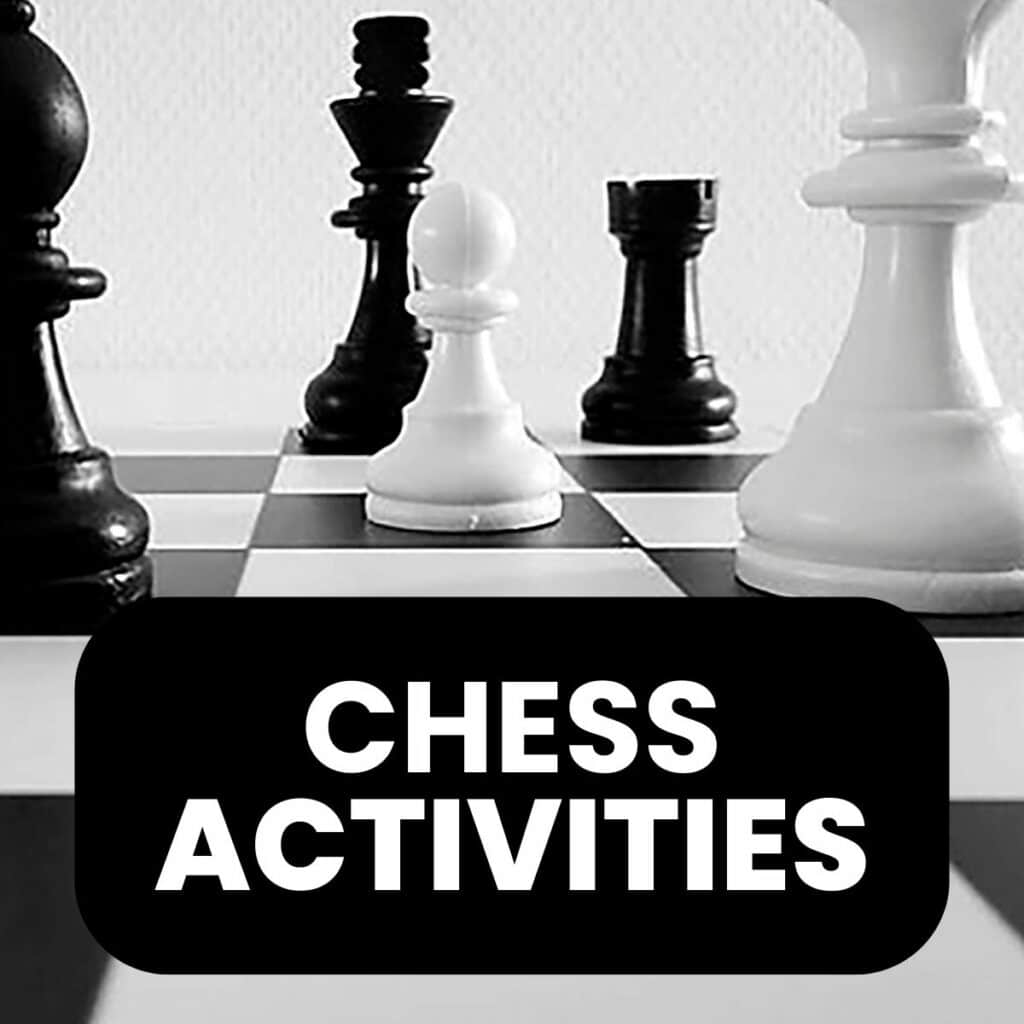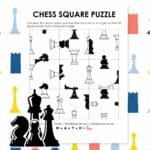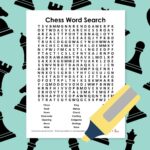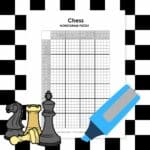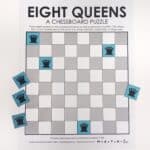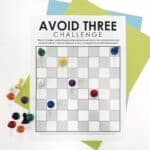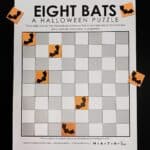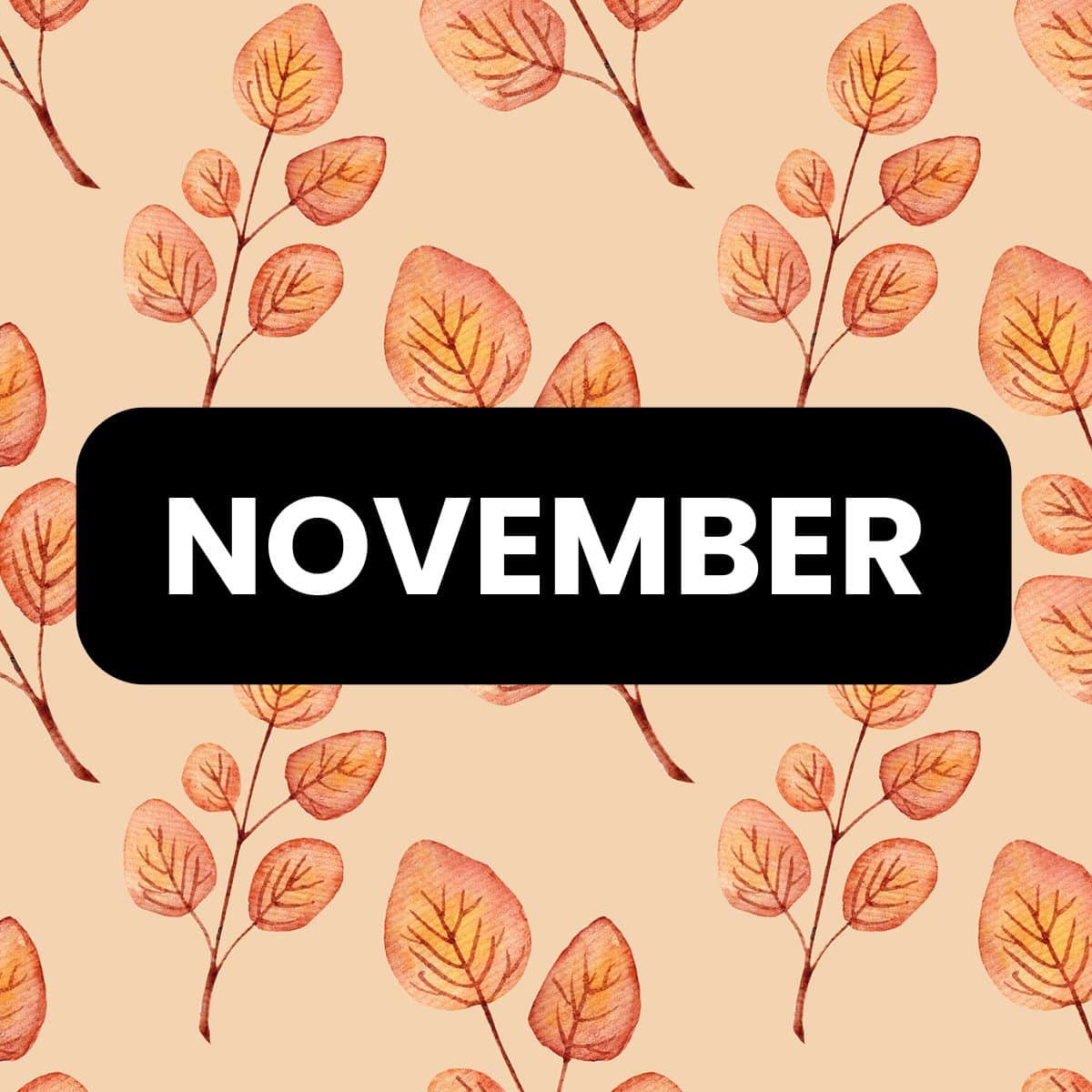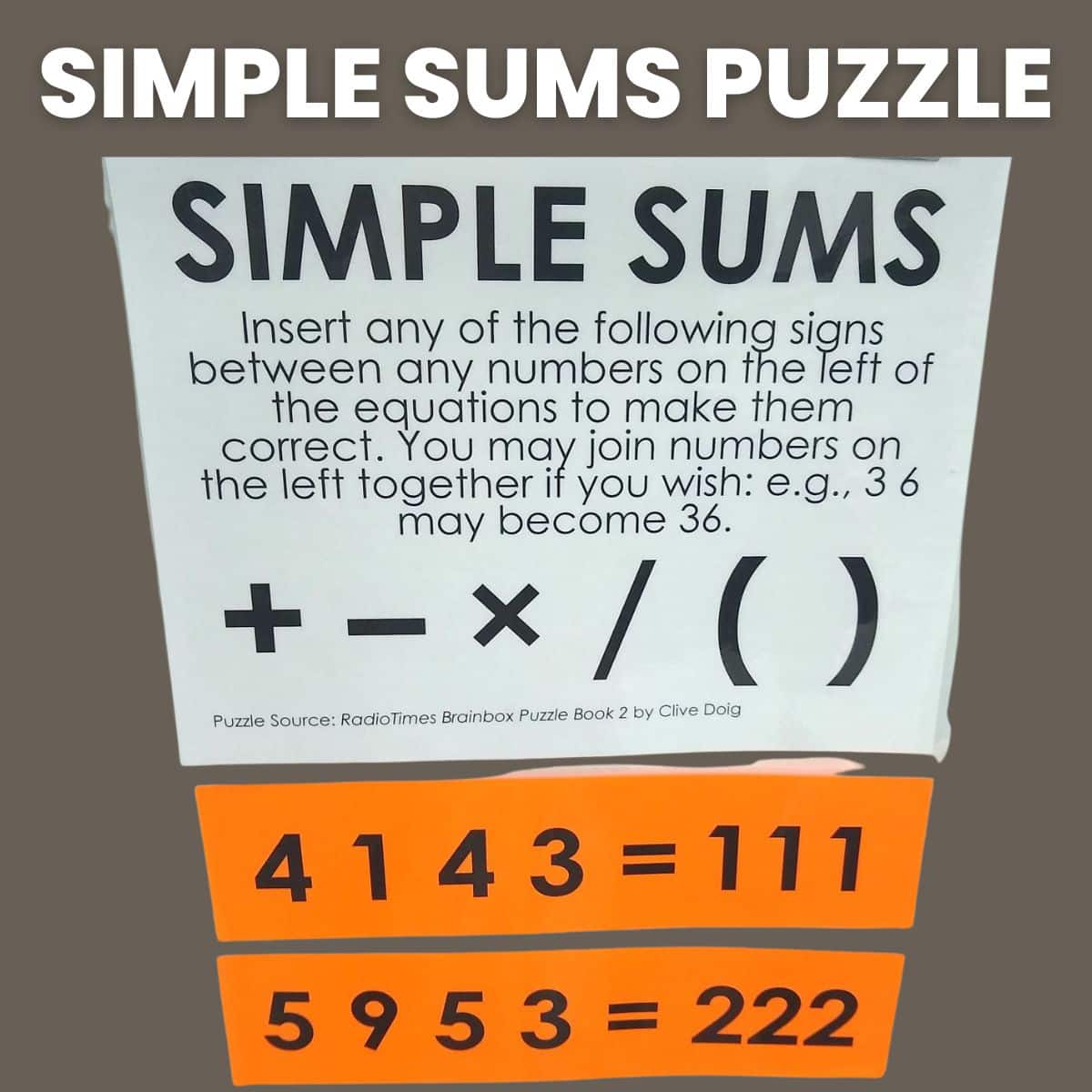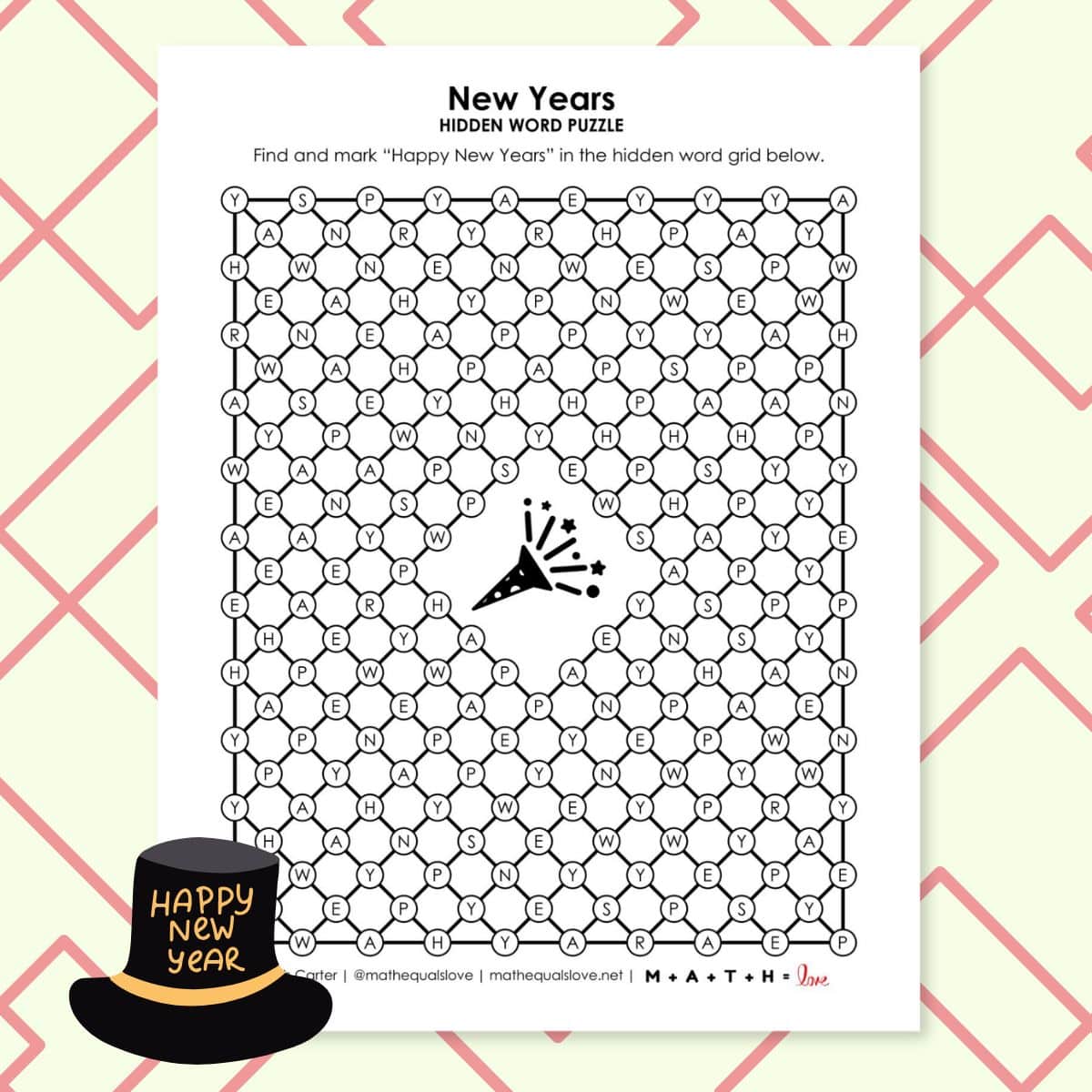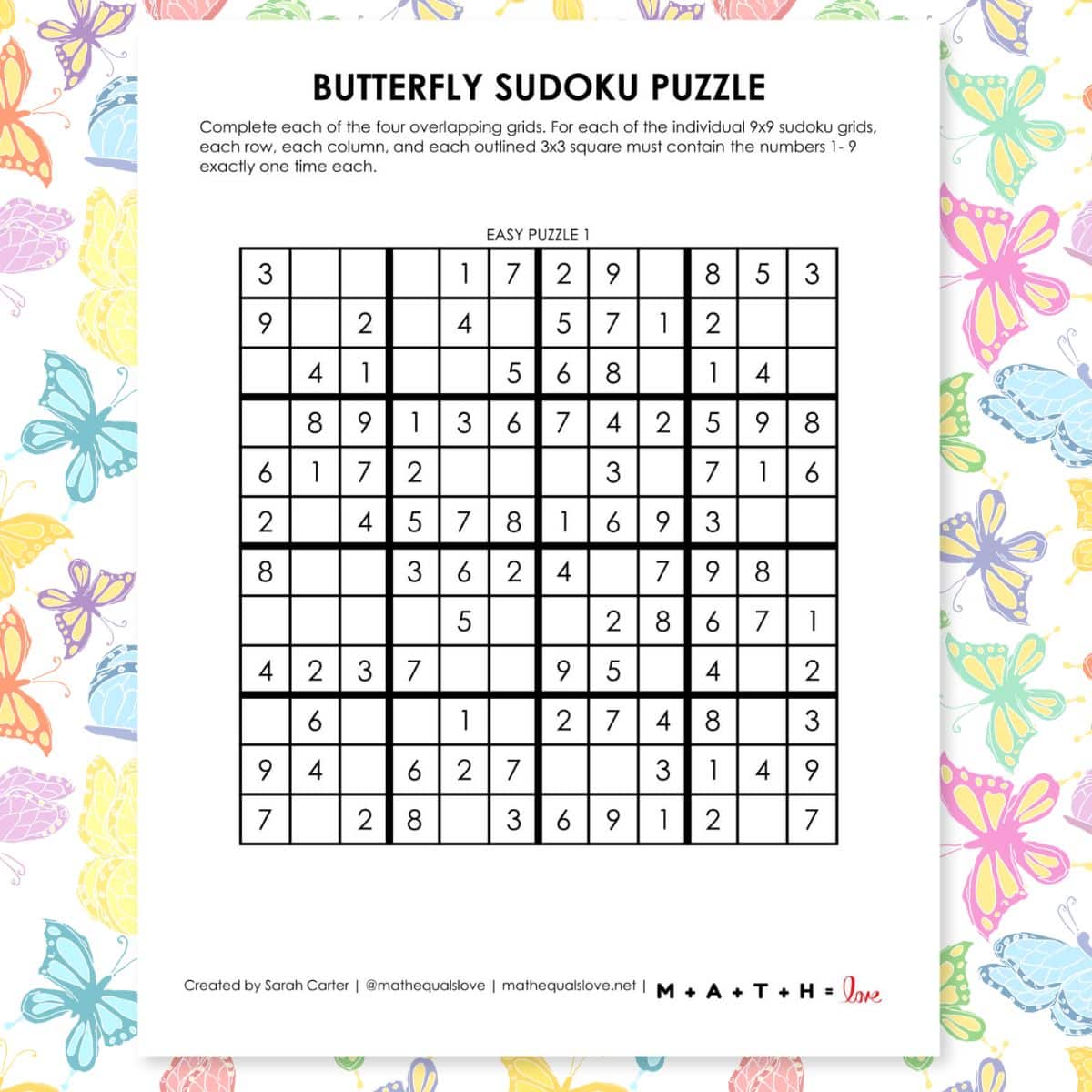Chess Cube Puzzle
This blog post contains Amazon affiliate links. As an Amazon Associate, I earn a small commission from qualifying purchases.
Last year, I created a copy of the chess cube puzzle for my classroom. Over the last few years, I have made quite a few puzzles for my classroom out of wooden cubes including the Gambler’s Die Puzzle, Instant Insanity, Three Immovable Pentablocks, SOMA blocks, and Genius Blocks.
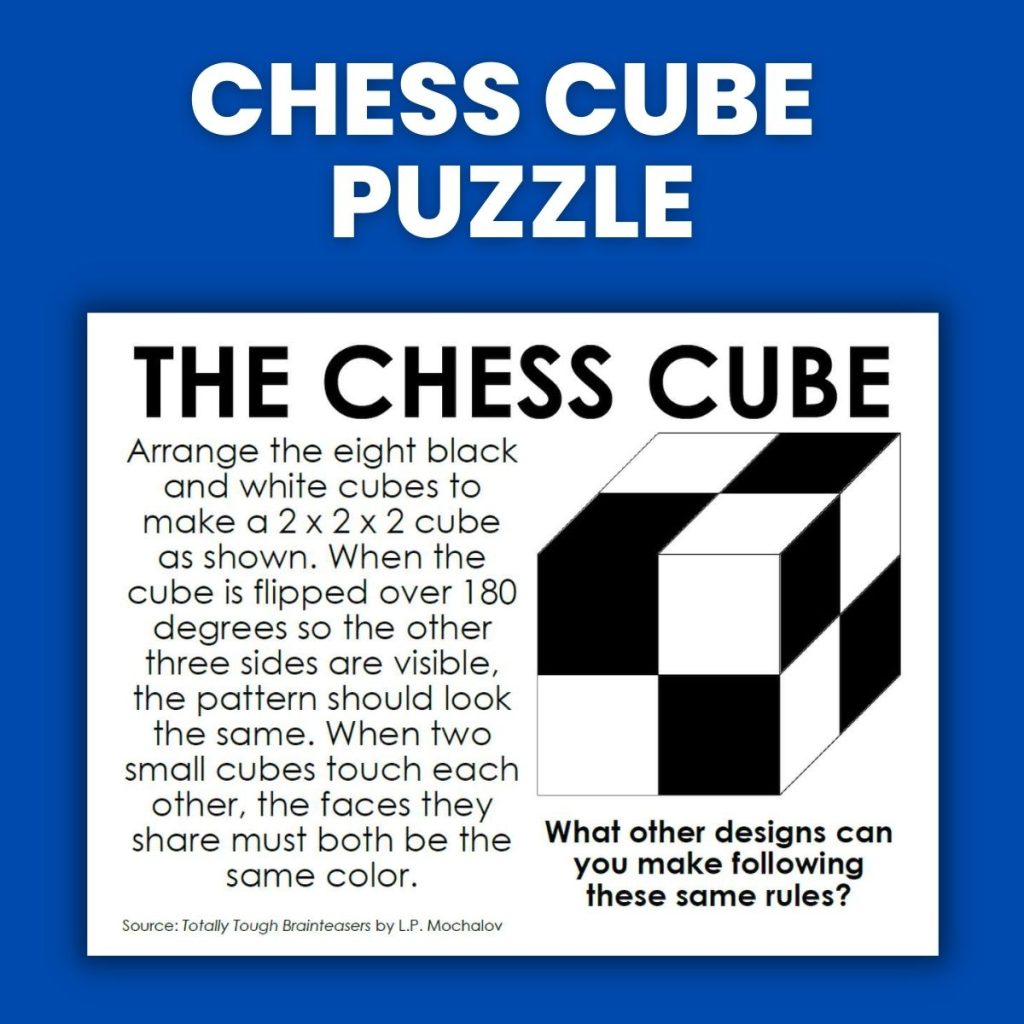
Looking for more chess-themed activities and puzzles for your classroom? Here’s a few examples of the other chess-related activities I have created.
When I ran across another puzzle that I could build with my collection of wooden cubes in Totally Tough Brainteasers by L.P. Mochalov, I was very excited to use it with my students.
This wasn’t the first time I have used a puzzle from Leonid Mochalov, a prolific Russian puzzle creator, in my classroom. His Star Pentominoes Puzzle was a big hit with my students last year. If you want to browse some of Mochalov’s puzzles, quite a few of them are shared for free (including the chess cube puzzle) on his website.
Instructions for Solving the Chess Cube Puzzle
I typed up the instructions for the chess cube puzzle, and then I quickly got to work making the wooden cubes for my students to use to solve the puzzle.
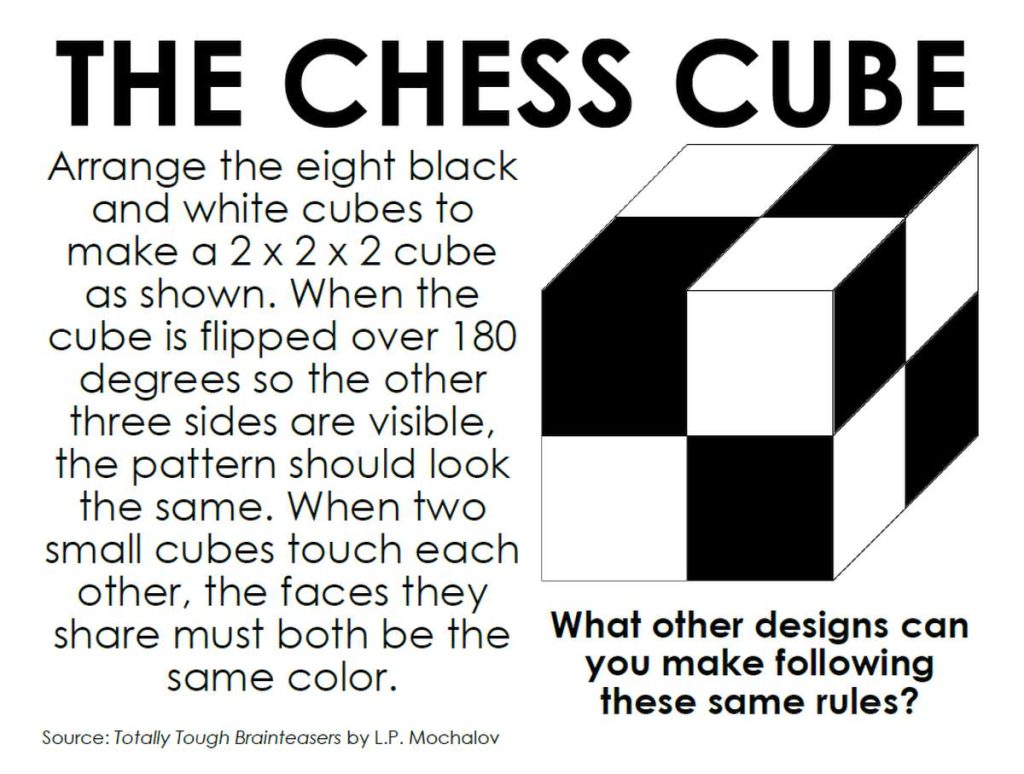
Arrange the eight black and white cubes to make a 2 x 2 x 2 cube as shown. When the cube is flipped over 180 degrees so the other three sides are visible, the pattern should look the same. When two small cubes touch each other, the faces they share must both be the same color.
What other designs can you make following these same rules?
Building the Black and White Cubes
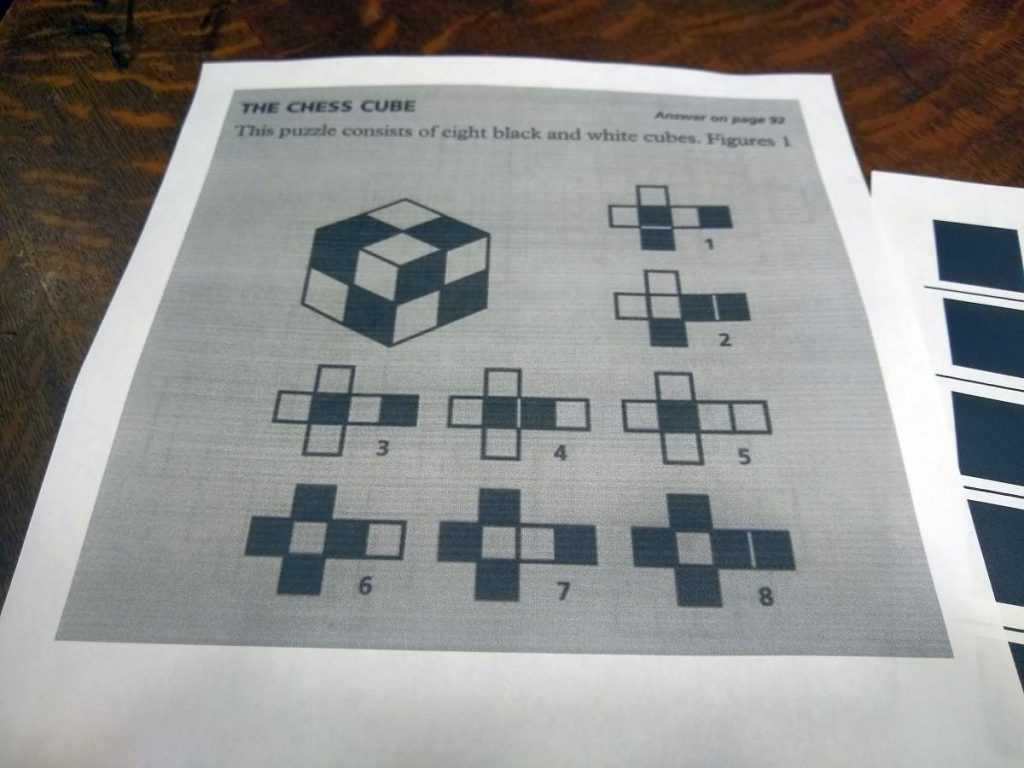
I printed off the instructions with the nets for making each of the eight black and white cubes for the puzzle.
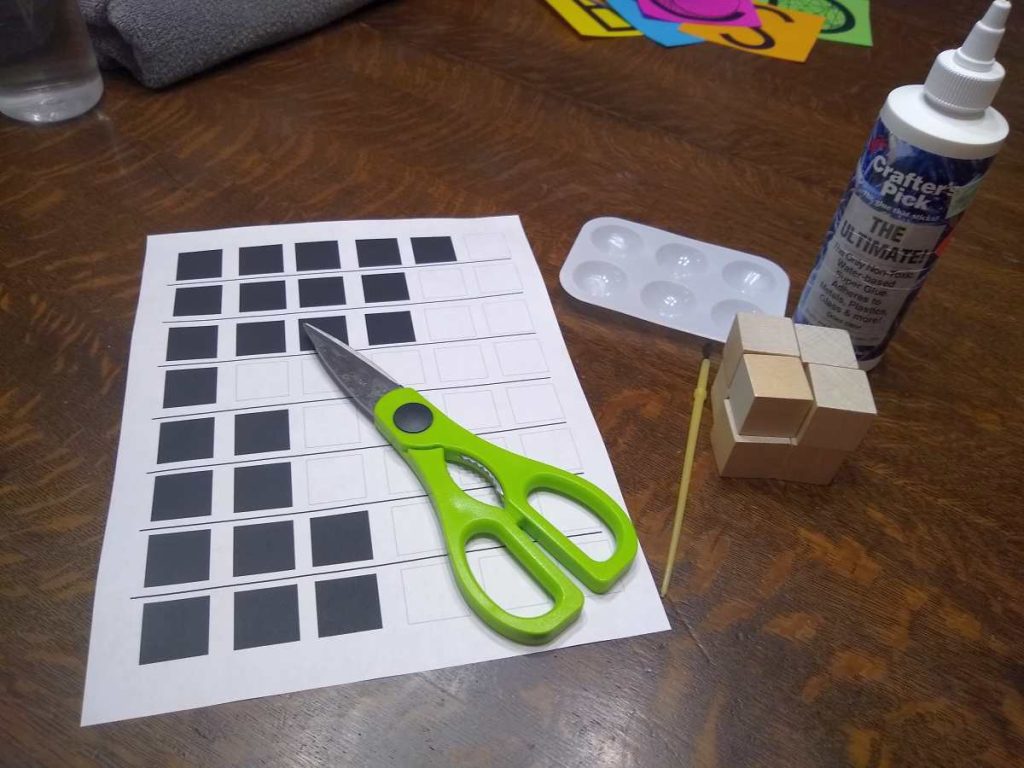
I created a template of one-inch squares with the correct colorings so I could easily cut out the squares and glue them on the wooden cubes according to the pictures of the provided nets.
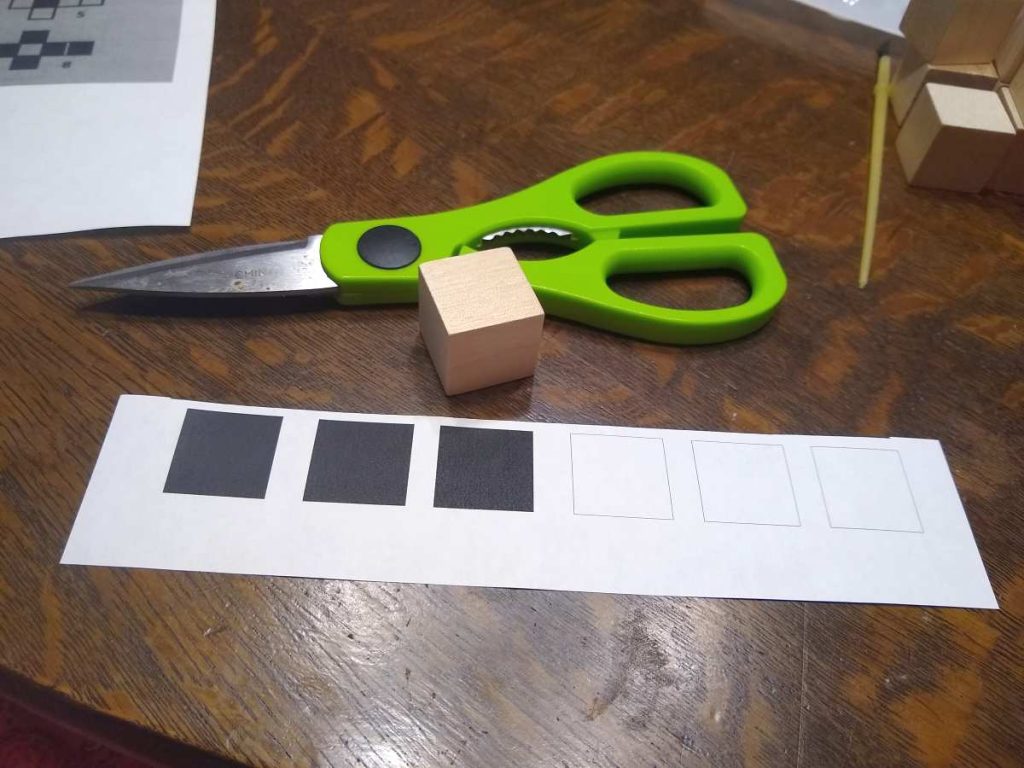
I also got out my scissors, craft glue, palette tray, and paintbrush.
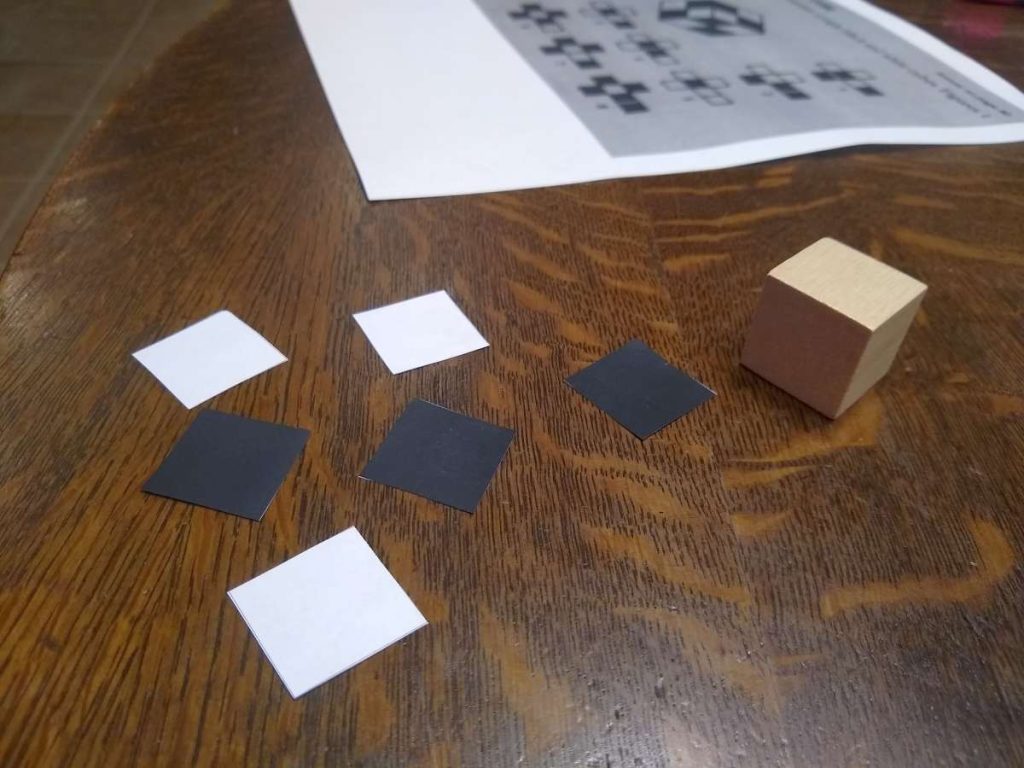
For each of the eight wooden cubes, I first cut out the individual squares. I used my paintbrush to apply a thin layer of craft glue to each side of the cube. Then, I pressed the piece of paper on to the glued surface.
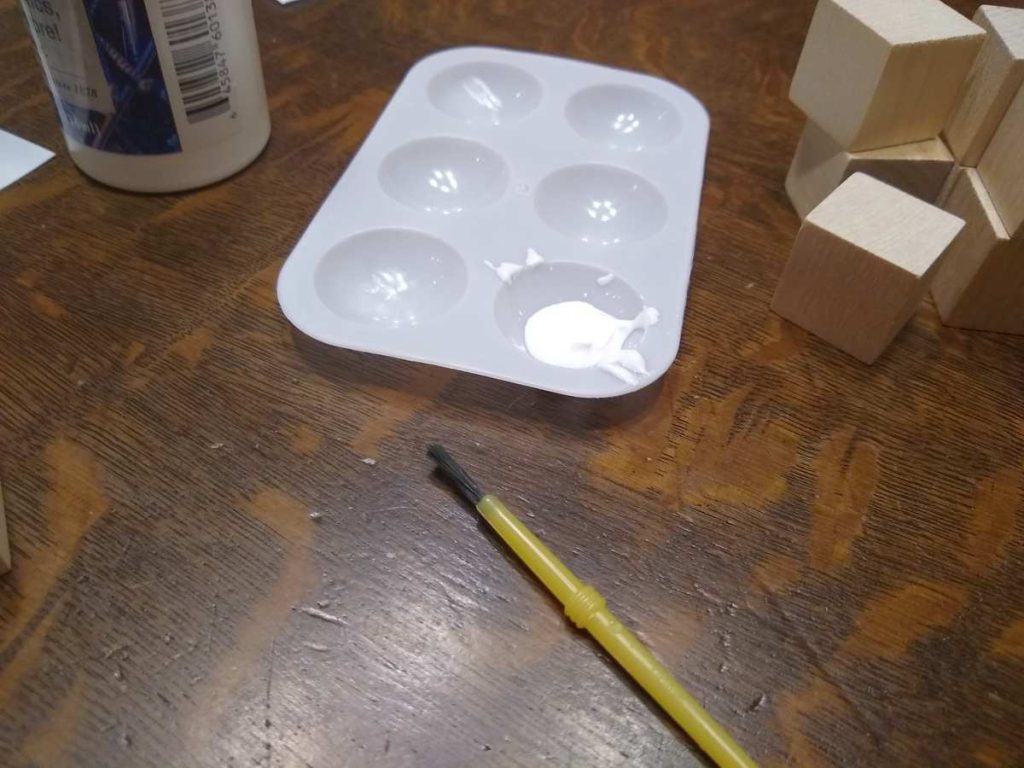
Once all of the cubes were assembled and dry, I used mod podge and a foam brush to seal them.
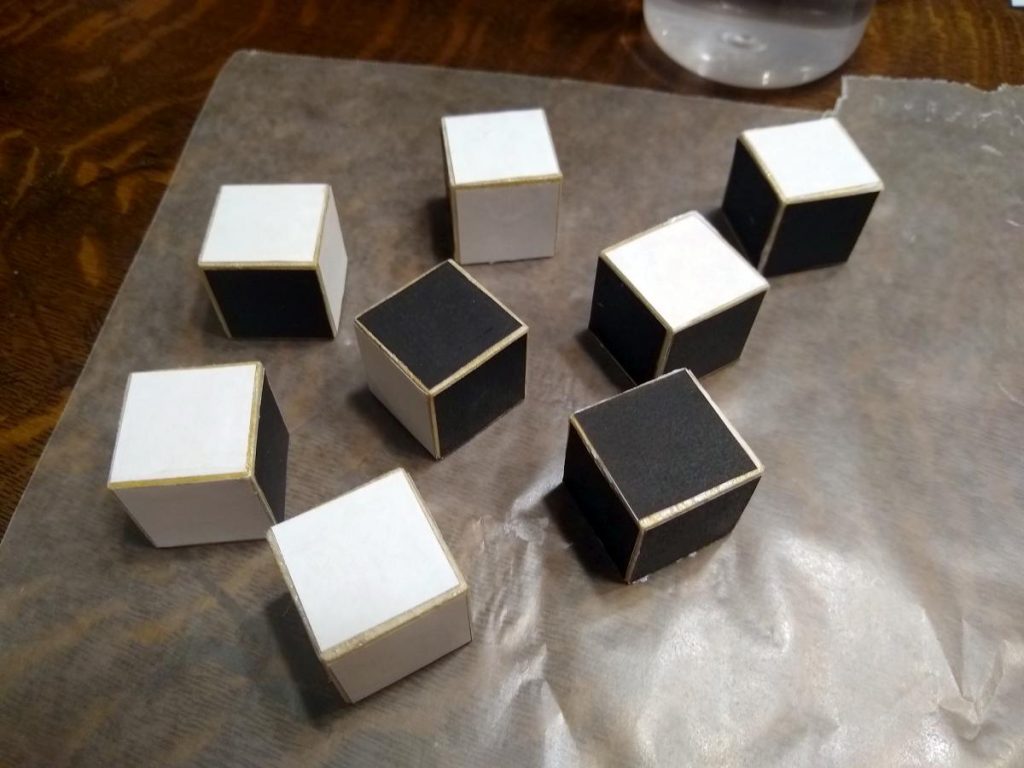
Student Response to the Chess Cube
Now it was time to test this puzzle out in my classroom!
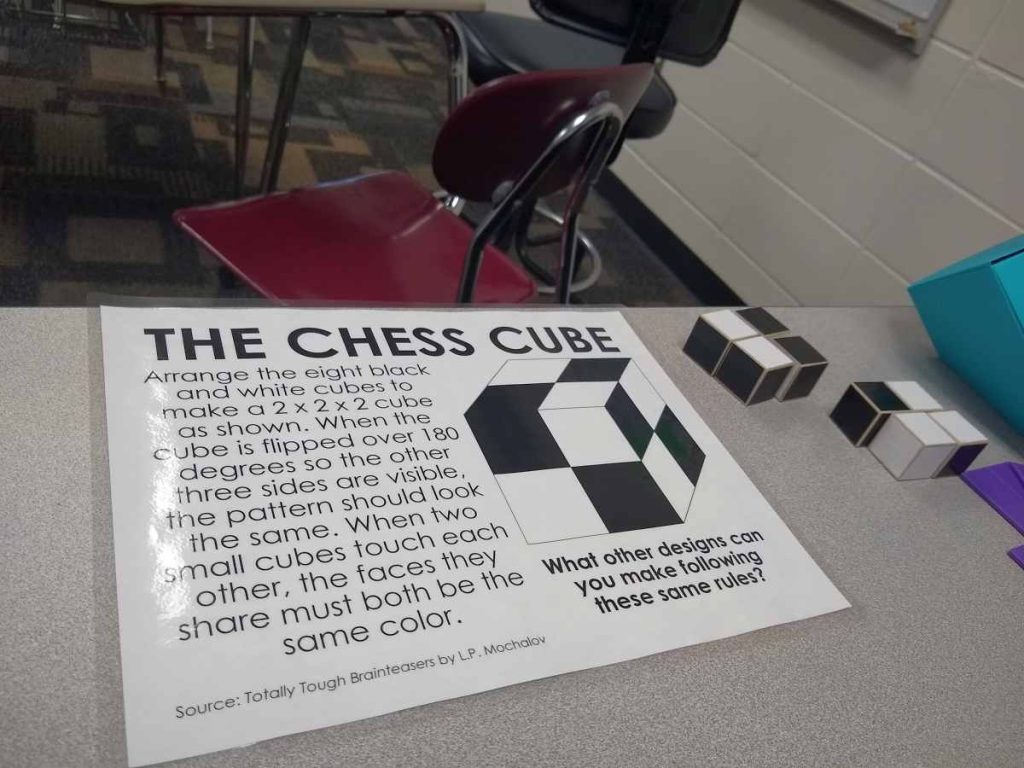
I had one particular student who became obsessed with solving puzzles last year. He was constantly asking if I had made any new puzzles so he could be the very first one to try them out.
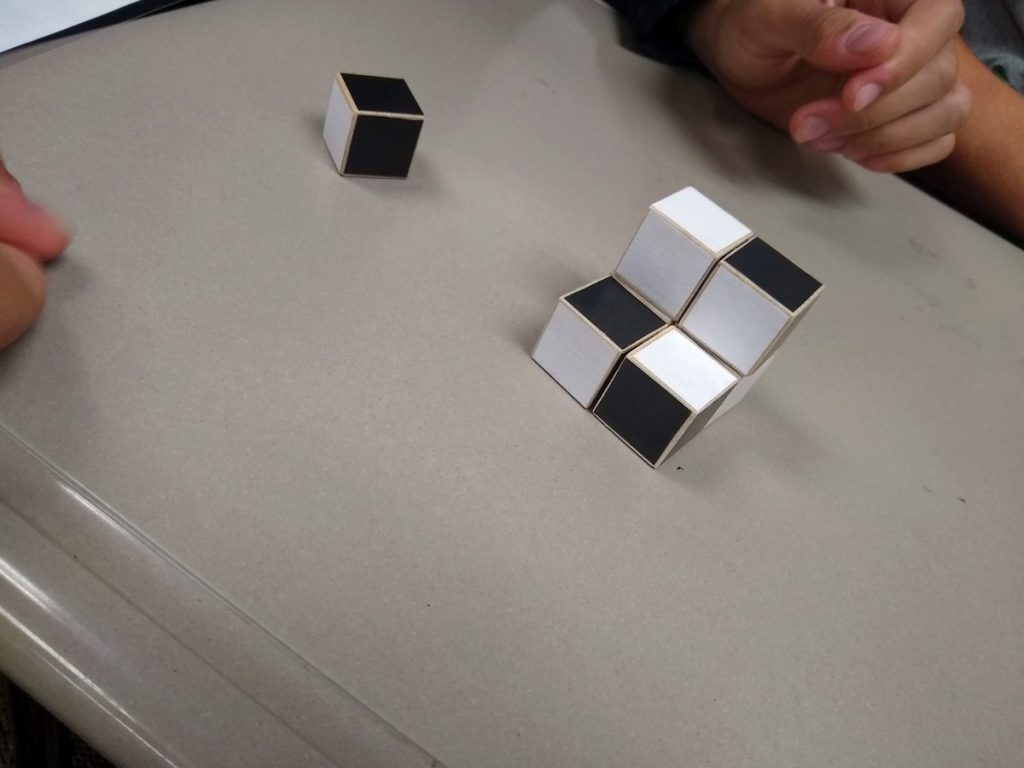
After a few minutes of solving the puzzle, he brought it back to me. I went to check his solution, and that’s when I discovered that he hadn’t read all of the instructions.
He had made a cube that looked like the picture provided in the instructions. But, he hadn’t read the part of the instructions that read, “When two small cubes touch each other, the faces they share must both be the same color.”
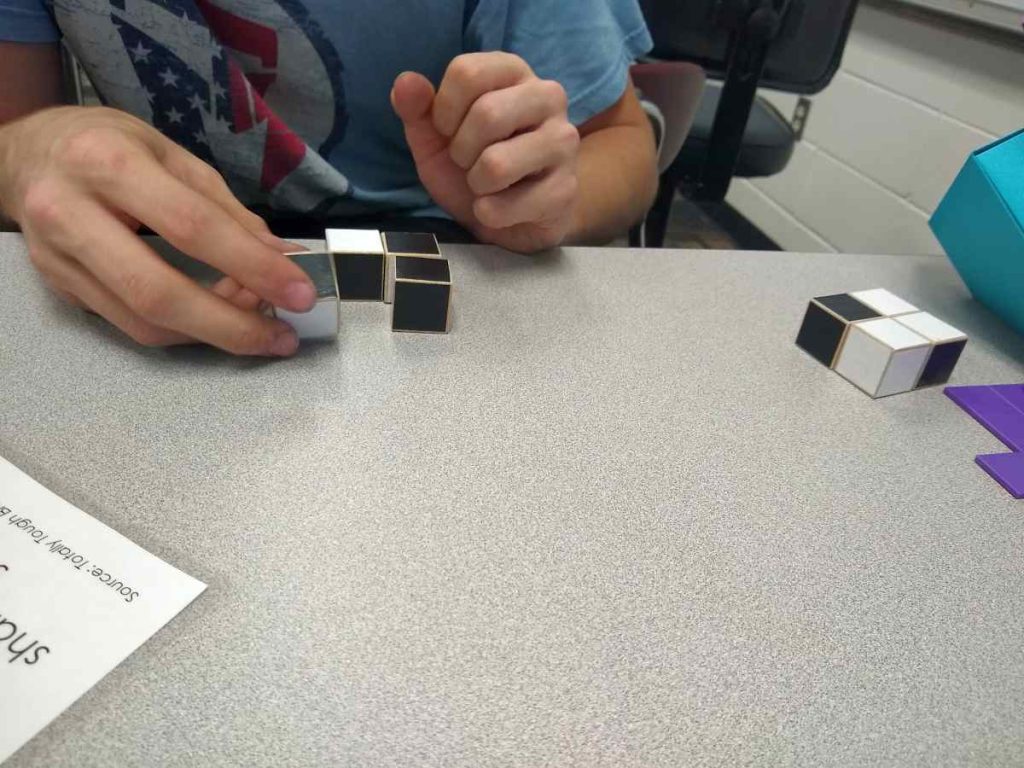
The next day, my persistent puzzle-solving student tried again. And the next day. And the next day.
As the school year continued, he would continue to try the puzzle every couple of weeks. I was starting to wonder if the puzzle was even solvable.
I found the answer key to the puzzle, and I set down one day during my planning period to solve the puzzle myself. I couldn’t even put the puzzle together with the answer key!
And, that is a really long story of why I never actually ended up sharing this puzzle on my blog last year. I think I might modify the instructions this year. I haven’t decided if I want them to just build the cube as pictured or if I want to see what they can make using the rule that the touching faces must match in color.
I guess this is what I get for recreating a puzzle from a book titled Totally Tough Brainteasers.
If anyone is familiar with this puzzle or has solved it, I would love to hear from you!
Puzzle Solutions
Puzzle solutions are available on a password-protected solution page. I do not openly post the puzzle answer keys because one of my goals as a resource creator is to craft learning experiences for students that are non-google-able. I want teachers to be able to use these puzzles in their classrooms without the solutions being found easily on the Internet.
Please email me at sarah@mathequalslove.net for the password to the answer key database featuring all of my printable puzzles and math worksheets. I frequently have students emailing me for the answer key, so please specify in your email what school you teach at and what subjects you teach. If you do not provide these details, I will not be able to send you the password.
Not a teacher? Go ahead and send me an email as well. Just let me know what you are using the puzzles for. I am continually in awe of how many people are using these puzzles with scouting groups, with senior adults battling dementia, or as fun activities in their workplace. Just give me enough details so I know you are not a student looking for answers to the puzzle that was assigned as their homework!

